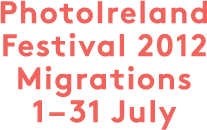Immigrants bring many things to the U.S., but their lasting contribution to the country has always been their children. The NPR series “Immigrants’ Children” looks at that legacy, telling the stories of those children and examining the issues they face.
Award-winning authors Edwidge Danticat, Junot Diaz and Samina Ali all came to this country as children — Danticat from Haiti, Diaz from the Dominican Republic, and Ali from India.
As part of NPR’s series on the children of immigrants, these three authors offer perspective on the transformation of immigrants in America as the next generation assimilates.
Edwidge Danticat’s most recent book, Brother, I’m Dying, is a memoir about her uncle’s tragic story of trying to immigrate to this country. Danticat has been in America since she was 12 when she lived with her family in a Haitian neighborhood of New York City. America has often been called a melting pot, but Danticat says that doesn’t mean children of immigrants will necessarily shed their cultural heritage.
Author Junot Diaz was born in the Dominican Republic. His Pulitzer-prize winning book, The Brief Wondrous Life of Oscar Wao, was praised for its vibrant prose and street-smart language, often in the Spanglish that surrounded Diaz growing up. For the Diaz family, the transformation of language was a big part of the immigrant experience.
Samina Ali, author of Madras on Rainy Days, was raised both in India and the U.S like the protagonist in her novel, Layla. Ali was once wedded to a stranger through an arranged marriage, and her parents would take her back to India every year in hopes of strengthening the bonds of her heritage. But she says it’s a struggle to maintain that continuity with her own children.
NPR is a public American radio station and a thriving media organization at the forefront of digital innovation which creates and distributes award-winning news, information, and music programming to a network of 959 independent stations. Through them, NPR programming reaches 26.4 million listeners every week.







